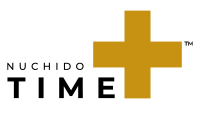There has been a change in the aesthetics industry with patients seeking out treatments to help them feel better as well as look better. This has led to the introduction of many treatments which address the root causes of aging at the cellular level. This article will look at combining low-level laser therapy devices such as the emerald laser, with the NAD+ boosting supplement Nuchido TIME+.
Click here to watch the webinar with Dr. Erik Reis DC, DACNB, CBIS and Dr. Nichola Conlon, Ph.D., who will share their insights about optimizing mitochondrial function to improve healthspan and lifespan.
Mitochondria are critical to healthy aging
Mitochondria are often referred to as the ‘powerhouses of the cell’. Every cell in the body is dependent on the cellular energy (ATP) that they produce to power critical cellular reactions and processes. More recently, it has also been found that they are central to healthy aging. This is because mitochondria influence a variety of processes which effect overall cellular health such as the production of reactive oxygen species (ROS) – which if left unchecked can severely damage cells and cause inflammation.

During aging the mitochondria decline in both number and function. This causes a reduction in cellular energy production, increased levels of ROS and chronic inflammation. Mitochondrial dysfunction has been identified as a key hallmark of aging, contributing to many of the signs of aging including:
- Fatigue
- Brain fog
- Loss of physical energy and endurance
- Chronic inflammation
- Metabolic dysfunction
- Reduced capacity for skin turnover and regeneration
As a result, restoring mitochondrial health has become a pivotal strategy to slow the cellular aging process across the whole body.
Low-Level Laser Therapy enhances energy production
During energy production in cells there are three main stages:
- Glycolysis
- The Krebs Cycle
- The electron transport chain (ETC)
Both the Krebs cycle and the electron transport chain occur within the mitochondria. The complexes in the electron transport chain are known to be damaged during the aging process.
Low level laser therapy (LLLT) works by targeting cells with photons of energy. The specific colour and wavelength of the light dictates the energy.
Studies show LLLT targets the components of the electron transport chain to enhance their function and increase ATP production. Recent research has shown that LLLT also reduces the production of ROS, inflammation and stimulates production of nitric oxide (NO). NO is a vasodilator increasing blood flow to the tissues, aiding the delivery of nutrients and the removal of waste.
As a result, LLLT improves mitochondrial function and overall cellular health leading to whole-body benefits including:
- Improving blood flow
- Increasing collagen synthesis to promote wound healing
- Stimulating repair of deeper structures such as nerves, tendon, cartilage, bones and even internal organs
- Reducing pain, inflammation and swelling
While LLLT is often advertised in clinic for its weight loss benefits, patients will often report feeling an improved sense of wellbeing after the treatment as mitochondrial health is restored. As a result of its many benefits, LLLT is now being investigated as a therapeutic tool for a variety of conditions.
NAD+ and Sirtuins restore mitochondrial health
NAD+ is a critical co-factor for ATP production in the mitochondria, specifically as part of the Krebs cycle where NAD+ donates electrons and hydrogen atoms. As NAD+ declines during aging the cells’ ability to produce sufficient energy is impaired contributing the cellular aging process.
Outside of energy production NAD+ is also involved in maintaining the health and function of the mitochondria. During aging several key changes occur to the mitochondria:
- Mitochondrial biogenesis (the production of new mitochondria) is turned down, meaning there are fewer mitochondria in the cells
- Damaged mitochondria accumulate – this is because the process which recycles damaged mitochondria (mitophagy) declines with age
- Mitochondria become less efficient at producing energy and produce more toxic ROS (reactive oxygen species) which damages the cell and stimulates chronic inflammation.
By interacting with longevity proteins called the Sirtuins, NAD+ works to address these issues. NAD+ is known to stimulate the production of the new mitochondria, activate mitophagy to recycle and clear out damaged mitochondria and reduce production of ROS and inflammation. In this manner, NAD+ and sirtuins enhance mitochondrial health and energy production, which is why many people feel increased physical and mental energy levels when boosting their NAD+ levels.

Combining Low-Level Laser Therapy and Nuchido TIME+
Aging is a complex problem therefore combining multiple treatment strategies to address the various Hallmarks of aging will provide greater results. NAD+ restoration alongside LLLT is a great way to introduce a multi-targeted approach to aging into your clinic.

We would recommend patients initially take a one month course of Nuchido TIME+ prior to LLLT to improve overall cellular health and prime cells ready for treatment. Our human clinical trials demonstrate that after just 28 days cells have increased NAD+, they are functioning biologically younger, and have reduced levels of inflammation. By taking Nuchido TIME+ for one month prior to treatment cells are in a position to respond well to low-level laser therapy.
During the course of LLLT treatments, use of Nuchido TIME+ should be maintained to enhance the whole-body benefits. We recommend incorporating the price of Nuchido TIME+ into the treatment package.
To arrange a call with our Partner Relationship Manager please contact partners@nuchido.com
